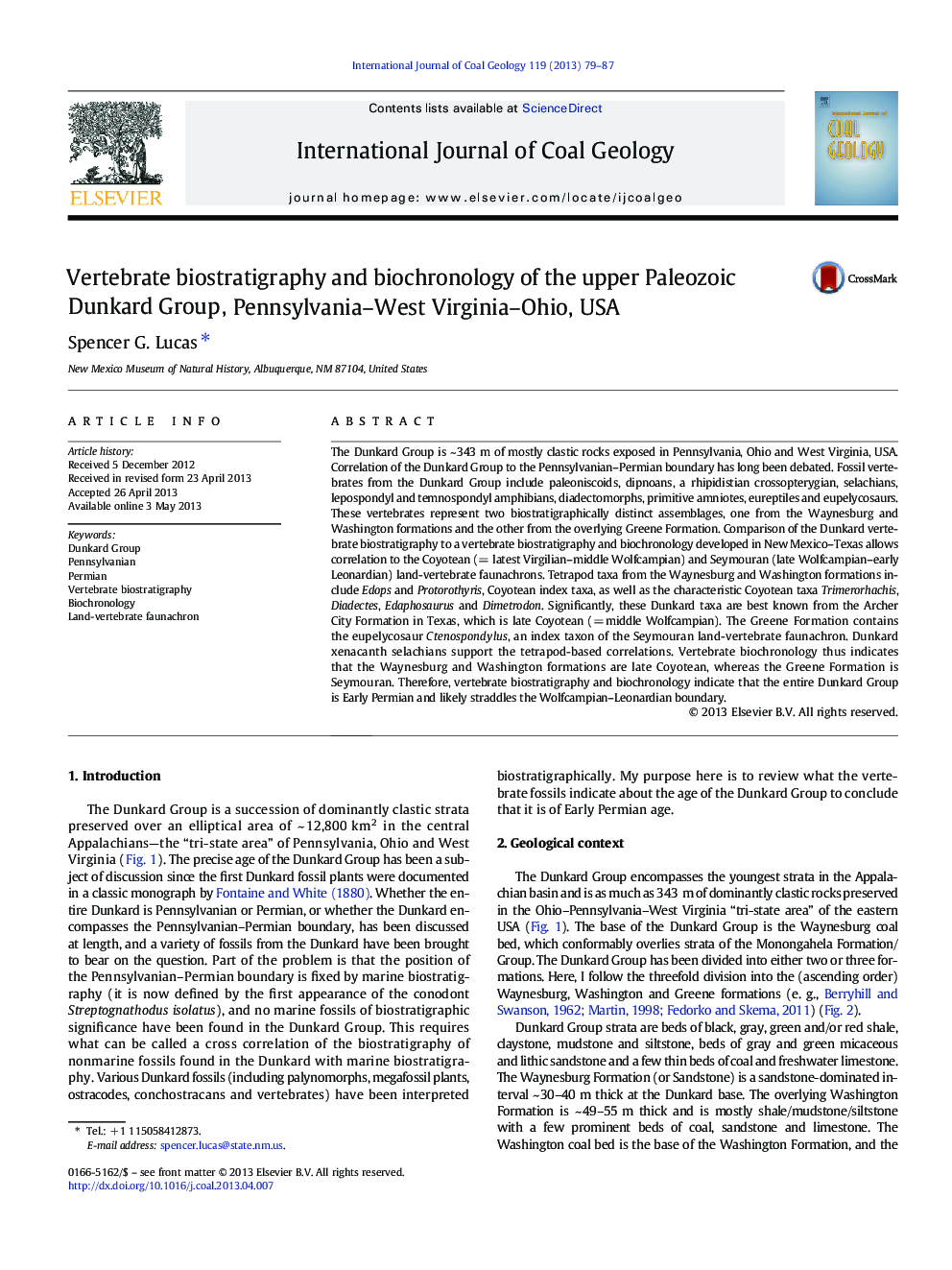| کد مقاله | کد نشریه | سال انتشار | مقاله انگلیسی | نسخه تمام متن |
|---|---|---|---|---|
| 1753188 | 1522577 | 2013 | 9 صفحه PDF | دانلود رایگان |

• Fossil vertebrates have been known from the Dunkard Group in the eastern USA for about one century.
• Dunkard vertebrates have long been considered to indicate an Early Permian age.
• A standard vertebrate biochronology exists for the Late Pennsylvanian–Permian.
• This biochronology indicates that the Dunkard Group is of Early Permian age.
The Dunkard Group is ~ 343 m of mostly clastic rocks exposed in Pennsylvania, Ohio and West Virginia, USA. Correlation of the Dunkard Group to the Pennsylvanian–Permian boundary has long been debated. Fossil vertebrates from the Dunkard Group include paleoniscoids, dipnoans, a rhipidistian crossopterygian, selachians, lepospondyl and temnospondyl amphibians, diadectomorphs, primitive amniotes, eureptiles and eupelycosaurs. These vertebrates represent two biostratigraphically distinct assemblages, one from the Waynesburg and Washington formations and the other from the overlying Greene Formation. Comparison of the Dunkard vertebrate biostratigraphy to a vertebrate biostratigraphy and biochronology developed in New Mexico–Texas allows correlation to the Coyotean (= latest Virgilian–middle Wolfcampian) and Seymouran (late Wolfcampian–early Leonardian) land-vertebrate faunachrons. Tetrapod taxa from the Waynesburg and Washington formations include Edops and Protorothyris, Coyotean index taxa, as well as the characteristic Coyotean taxa Trimerorhachis, Diadectes, Edaphosaurus and Dimetrodon. Significantly, these Dunkard taxa are best known from the Archer City Formation in Texas, which is late Coyotean (= middle Wolfcampian). The Greene Formation contains the eupelycosaur Ctenospondylus, an index taxon of the Seymouran land-vertebrate faunachron. Dunkard xenacanth selachians support the tetrapod-based correlations. Vertebrate biochronology thus indicates that the Waynesburg and Washington formations are late Coyotean, whereas the Greene Formation is Seymouran. Therefore, vertebrate biostratigraphy and biochronology indicate that the entire Dunkard Group is Early Permian and likely straddles the Wolfcampian–Leonardian boundary.
Journal: International Journal of Coal Geology - Volume 119, 1 November 2013, Pages 79–87